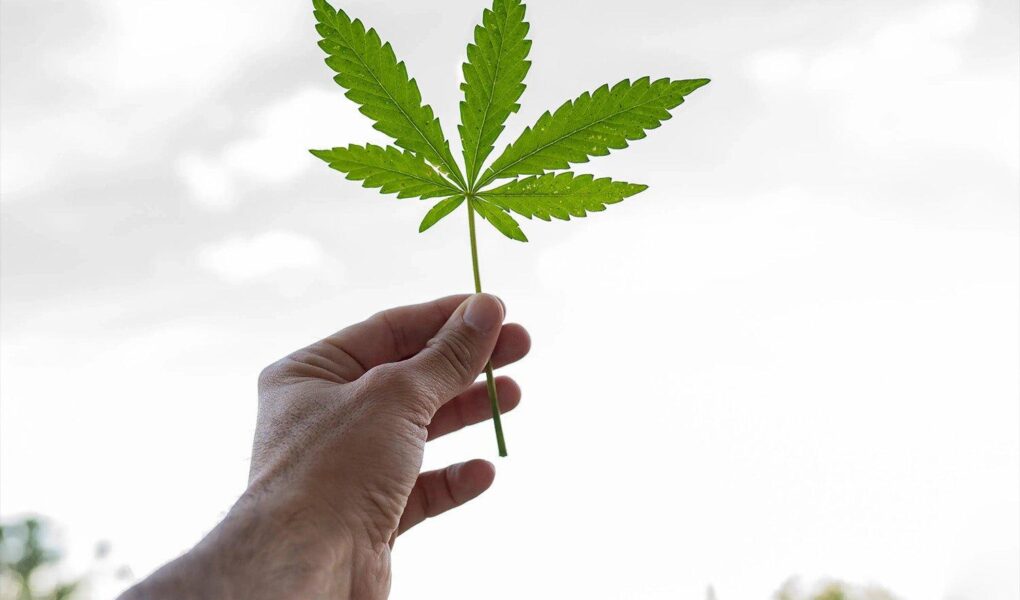The Allure of Cannabis: A Journey into the World of Marijuana
Marijuana—a word that ignites a spectrum of images, opinions, and emotions. For some, it conjures the comforting haze of relaxation and creativity, while for others, it evokes concerns about legality, health, and societal impacts. Yet, beneath the controversies swirling around its use lies an enduring fascination with this multifaceted plant. From its ancient origins as a medicinal herb to its modern-day role in recreational culture and wellness practices, marijuana is a subject that invites exploration. This article delves into the intricate tapestry of marijuana, examining its botanical characteristics, varied strains, and the historical contexts that have shaped its perception. Whether you are an aficionado or an inquisitive newcomer, join us as we unravel the complexities and nuances of marijuana—an extraordinary plant that continues to spark dialogue and discovery in a rapidly changing world.
Table of Contents
- Understanding the Botanical Profiles of Marijuana Varieties
- Exploring the Therapeutic Benefits of Cannabinoids and Terpenes
- Navigating Consumption Methods for Optimal Enjoyment
- Responsible Use and Safety Considerations in Cannabis Consumption
- Q&A
- Key Takeaways
Understanding the Botanical Profiles of Marijuana Varieties
Exploring the vast world of marijuana varieties unveils a rich tapestry of genetic characteristics and unique attributes that define each strain. These varieties are primarily categorized into three main types: Indica, Sativa, and Hybrid. Indica strains are known for their relaxing effects and are often favored for nighttime use. In contrast, Sativa strains are typically uplifting, providing an energy boost and enhancing creativity, making them ideal for daytime consumption. Hybrids, as the name suggests, combine elements of both Indica and Sativa, offering diverse effects based on the specific genetic makeup of the strain.
Understanding these profiles is vital for consumers seeking the beneficial properties of marijuana, whether for recreational enjoyment or medicinal purposes. Each strain possesses a distinct terpene profile, which contributes to flavor, aroma, and potential therapeutic effects. Below is a concise comparison of some popular strains:
| Strain Name | Type | Aroma | Effects |
|---|---|---|---|
| Blue Dream | Sativa-Dominant Hybrid | Berry, Sweet | Uplifting, Relaxation |
| Granddaddy Purple | Indica | Grape, Sweet | Calm, Sleepy |
| OG Kush | Hybrid | Pine, Earthy | Euphoric, Relaxing |
| Sour Diesel | Sativa | Diesel, Pungent | Energetic, Happy |
By delving into these botanical profiles, enthusiasts can make informed choices tailored to their individual needs and preferences, fostering a deeper appreciation for the multifaceted nature of cannabis. Each strain’s distinct genetics not only influences its effects but also highlights the complex relationship between plant biology and user experience.
Exploring the Therapeutic Benefits of Cannabinoids and Terpenes
Cannabinoids and terpenes are two crucial components found in marijuana that have garnered significant attention for their therapeutic properties. Research indicates that these compounds work synergistically, enhancing each other’s effects, a phenomenon known as the “entourage effect.” The therapeutic benefits of cannabinoids, such as THC and CBD, can vary widely depending on the individual’s unique physiology and the specific strain of marijuana used. Some of the notable benefits include:
- Pain relief: Cannabinoids have been shown to help alleviate chronic pain conditions.
- Anti-inflammatory properties: Certain cannabinoids can reduce inflammation, aiding those with autoimmune disorders.
- Anxiety and stress reduction: Many users report a calming effect, making it useful for anxiety management.
Terpenes, the aromatic compounds that give cannabis its distinct scent, also play a vital role in its therapeutic potential. They not only contribute to the plant’s flavor and fragrance but are also believed to possess their own health benefits. For example, myrcene is known for its sedative properties, while limonene may elevate mood. Here’s a quick comparison of some common terpenes and their potential benefits:
| Terpene | Potential Benefits |
|---|---|
| Myrcene | Muscle relaxation, sedative effects |
| Limonene | Stress relief, mood enhancement |
| Caryophyllene | Anti-inflammatory, pain relief |
Navigating Consumption Methods for Optimal Enjoyment
When exploring the world of marijuana, the method of consumption plays a vital role in determining the overall experience. Each technique offers unique effects, durations, and sensations. Here are some popular methods to consider:
- Smoking: This classic method allows cannabinoids to enter the bloodstream quickly through the lungs, providing immediate effects. Options include joints, blunts, and pipes.
- Vaporizing: A healthier alternative to smoking, vaporizers heat the cannabis to release its active compounds without combustion, offering a smoother, less irritating experience.
- Edibles: Infused foods and drinks deliver a slow, long-lasting high, as cannabinoids must be metabolized by the liver. Be mindful of dosing, as effects can take up to two hours to kick in.
- Tinctures: These alcohol-infused extracts allow for easy and precise dosing with the added benefit of quick absorption when placed under the tongue.
To help you choose the right method, consider factors such as potency, duration, and your personal preferences. The following table summarizes some key attributes:
| Consumption Method | Onset Time | Duration |
|---|---|---|
| Smoking | Instant | 1-3 hours |
| Vaporizing | 1-5 minutes | 2-4 hours |
| Edibles | 30-120 minutes | 4-8 hours |
| Tinctures | 15-45 minutes | 2-6 hours |
Understanding the characteristics of each method can enhance your enjoyment and lead to a more tailored experience that fits your lifestyle and preferences.
Responsible Use and Safety Considerations in Cannabis Consumption
As consumers explore the diverse world of cannabis, it is crucial to approach its use with mindfulness and responsibility. Understanding one’s own tolerance levels and individual reactions to cannabis is imperative to ensure a safe experience. Before consumption, consider the following key points:
- Start Low and Go Slow: Begin with a small dose, especially if you are new to cannabis. Gradually increase the amount as you become familiar with its effects.
- Stay Hydrated: Drinking water can help alleviate dry mouth and support overall well-being during consumption.
- Avoid Mixing Substances: Combining cannabis with alcohol or other drugs can amplify effects unpredictably, leading to increased risks.
Safety is also a matter of environment and legality. Ensuring that you are in a comfortable and safe setting can enhance your experience. Consider these safety tips:
- Know the Laws: Familiarize yourself with local regulations surrounding marijuana use to avoid legal issues.
- Consume Responsibly with Peers: If possible, share your experience with friends who are experienced users, fostering a safe and supportive atmosphere.
- Keep Away from Minors: Ensure that cannabis is stored and accessed out of reach of minors to prevent misuse.
Q&A
Q&A: Understanding Marijuana
Q1: What exactly is marijuana?
A1: Marijuana, also known as cannabis, is a flowering plant that belongs to the Cannabaceae family. Renowned for its psychoactive properties, it contains compounds called cannabinoids, the most notable being tetrahydrocannabinol (THC) and cannabidiol (CBD). These compounds interact with the body’s endocannabinoid system, resulting in a range of effects and therapeutic benefits.
Q2: How is marijuana typically consumed?
A2: Marijuana can be consumed in various ways. The most common methods include smoking, vaping, and ingesting edibles. In smoking, users often roll the dried flowers into joints or use pipes and bongs. Vaping provides a less harsh alternative as it heats the cannabis to a temperature that releases cannabinoids without combustion. Edibles, like brownies or gummies, offer a discrete and flavorful way to experience marijuana’s effects, though they produce slower onset results.
Q3: What are the different strains of marijuana?
A3: Marijuana is primarily categorized into three strains: indica, sativa, and hybrid. Indica strains are known for their relaxing effects and are often favored for nighttime use. Sativa strains tend to provide uplifting and energizing effects, making them popular for daytime activities. Hybrids combine elements of both indica and sativa, offering a balanced experience tailored to specific user preferences or desired effects.
Q4: What effects can users expect from marijuana?
A4: The effects of marijuana can vary widely based on the strain, method of consumption, and individual tolerance. Common effects include relaxation, euphoria, altered perception, and increased appetite—popularly referred to as “the munchies.” On the other hand, some users may experience anxiety or paranoia, particularly with high-THC strains. It’s essential for individuals to know their own limits and choose strains accordingly.
Q5: Are there medicinal uses for marijuana?
A5: Yes, marijuana has gained recognition for its medicinal properties. It is often used to alleviate chronic pain, reduce inflammation, control nausea (especially in cancer patients undergoing chemotherapy), and improve sleep quality. Additionally, CBD, a non-psychoactive compound, is praised for its potential benefits in treating anxiety, epilepsy, and certain neurological disorders.
Q6: Is marijuana legal everywhere?
A6: The legality of marijuana varies significantly around the world and even within countries. In some places, it is fully legal for both recreational and medicinal use, while in others, it remains strictly prohibited. It’s important for users to familiarize themselves with local laws and regulations concerning marijuana possession, use, and distribution.
Q7: What are the potential risks associated with marijuana use?
A7: While many individuals enjoy marijuana without issues, there are potential risks to consider. Regular use can lead to dependence, and excessive consumption may impair cognitive functions or lead to mental health challenges in predisposed individuals. Additionally, smoking marijuana can have detrimental effects on lung health, although vaping and edibles provide alternative options.
Q8: How can someone choose the right marijuana product for their needs?
A8: Selecting the right marijuana product involves considering the desired effects, individual tolerance, and preferred consumption method. For beginners, it’s often recommended to start with low-THC strains or products higher in CBD to gauge their responses. Consulting a knowledgeable budtender or healthcare professional can also provide personalized recommendations tailored to specific needs or health conditions.
This Q&A aims to demystify marijuana, providing a clear and neutral understanding for readers curious about this multifaceted plant. Whether for recreational enjoyment or medicinal purposes, education is key to responsible use.
Key Takeaways
In the vast tapestry of nature, few plants inspire as much intrigue and discussion as marijuana. From its ancient origins as a versatile crop to its contemporary role in medical and recreational realms, the description of marijuana spans a spectrum as rich and varied as its uses. As we part ways with this exploration, it’s clear that marijuana is not merely a plant but a cultural phenomenon that continues to evolve. Whether as a subject of science, art, or personal experience, its complexities invite both curiosity and understanding. As our conversation about marijuana progresses, let us remain open-minded, informed, and respectful, recognizing that this plant’s narrative is woven into the fabric of human history and society.



